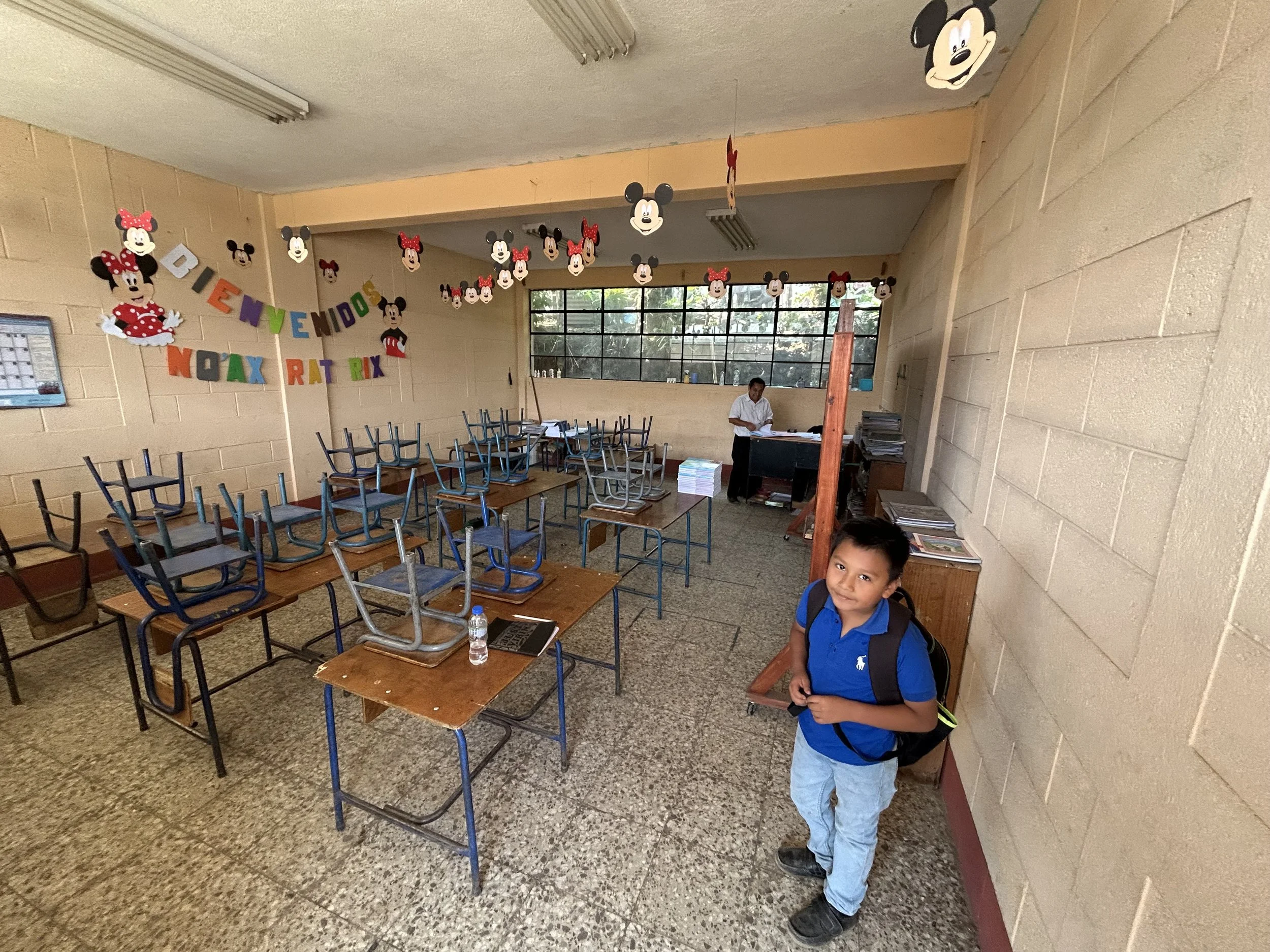The Guatemalan Education System: How Can we Promote a Pedagogy of Peace?
By Colin Majeski
All interviews were conducted using an interpreter.
From the shores of Lake Atitlan to the highlands of San Martin, Guatemala, Heber Pérez, the founder and CEO of K’amaya’l, a community tourism enterprise, transcends the title of a business owner. He stands as an educator, entrepreneur and community hero, illuminating hope within the San Lucas Toliman area.
Pérez, 39, is a multifaceted individual. Besides his work with K’amaya’l, he is involved in pioneering initiatives at local schools and helping to develop podcasting platforms for a community radio station. Pérez embodies the driving force behind a plethora of community-based endeavors and overall community activism, helping alleviate impoverishment and cultivate sustainable development for Guatemalans. At the forefront of Pérez's mind is the idea that education can be used as a vehicle for social change.
"Education is the only way we have to create a movement and to look for a different path that can save us from poverty," Pérez said.
During the Guatemalan armed conflict, only a militaristic education was available, this type of education existed solely to forcibly recruit fighting age men to the military, providing learning in terms of combat and required 30 months (about two and a half years) of military service Perez explained.
Heber Perez (Right) speaking at education roundtable. Photo by Jack Spiegel
In the peace accords that put an end to the conflict, signed in 1996, was an educational reform that was supposed to change to a student-centered type of learning. However, despite the end of the armed conflict, the educational landscape still faces challenges.
The system, designed to produce cheap labor, perpetuates a cycle of poverty and unemployment, particularly in rural areas like San Lucas Toliman, Pérez said.
The agreements were intended to usher in an era of progressive change after 36 years of armed conflict. The peace accords aimed to raise the standards of living by ensuring healthcare, education, social security and training for Guatemalans to achieve sustainable development — as well as infuse the history, language, and culture of the Maya people, which make up 43.75% of the national population, into Guatemala’s national curriculum.
"Even though it was a time of peace, kids were still being taught as in the time of war,” Pérez said.
Information provided by Pérez paints a stark picture of the education system's shortcomings. In Guatemala, it is common for a student to attend school in the morning or afternoon for three hours. This schedule exists to allow time for work during the day.
In San Lucas Toliman, only three schools offer education up to the high school level, and in one highschool with approximately 150 accounting graduates, a mere fraction go on to university. There is only one public university, Universidad de San Carlos de Guatemala in Guatemala City and a total of 16 throughout the country. According to the U.S. Agency for International Development, many Guatemalan youth either do not reach or finish high school, with 41% of teenagers aged 13-18 being out of school. This lack of access to secondary and tertiary education exacerbates the problem, and the need for work goes hand-in-hand with the poverty that keeps students out of school and in the workforce.
Ever “Samuel” Toreto
At the college level, the challenges intensify. Ever Samuel Toreto, a 19-year-old tourism student at Universidad del Valle de Guatemala and nephew of Pérez, looks to follow in his uncle's footsteps. The kindhearted and selfless Toreto finds himself in the midst of his battle with the education system. Besides the monetary constraints, Toreto's jump from high school to college was anything but easy. While just as intelligent as his peers, he could tell that other students around him were given a much better college preparatory experience,
"I noticed at my university everyone is skilled and everyone is prepared in a way,” he said. “I didn't have access to the technology that the other students had."
Toreto spoke about his firsthand experience witnessing the inequities in Guatemalan universities and shed light on the cultural stigma that devalues education.
"It's a part of the culture here,” he said. “The ones that go to college are the richest, so when I started college a lot of people would laugh at me and say that it's not necessary for life here."
The current mindset surrounding education in Guatemala prioritizes productivity over education. As Toreto put it, many people are scared to go to college, which reinforces ideas of mistrust toward the education system. Nevertheless, Toreto remains determined to break the cycle and make a difference in his community.
"Although it's hard, in the end it's going to be worth it because having a university diploma here in Guatemala is very important," Toreto said.
While the diploma is important, the issues continue to persist after access to university, even after earning a university diploma one still faces unemployment which causes skilled professionals to often look for jobs outside of Guatemala.
This is why Perez advocates for a paradigm shift in the education system, emphasizing the need for a pedagogy of peace. He stresses the importance of moving beyond traditional methods of instruction toward student-centered learning and constructivist education.
"Don't just focus on transmitting information and content," Perez asserted, "teach children new competencies for the 21st century."
These competencies should include entrepreneurship and critical thinking skills, empowering students to navigate an increasingly complex world. Perez aims to equip students with the tools they need to thrive in an evolving global landscape.
Elementary School in San Martin
As the landscape of Guatemalan education transforms, where teachers and students alike try to navigate a path forward. It is important to address not only the access but the quality of education provided and the stigma surrounding learning. Perez's advocacy underscores the urgent need for systemic reform.
"It is very important to look for a different type of education that promotes productivity and education that not only prepares you for employment, but also prepares you to become an employer," Perez said.
Ultimately, championing such a change requires a collective effort, from policy makers to parents and even the students themselves, everyone has a role in changing the culture of Guatemalan education.



